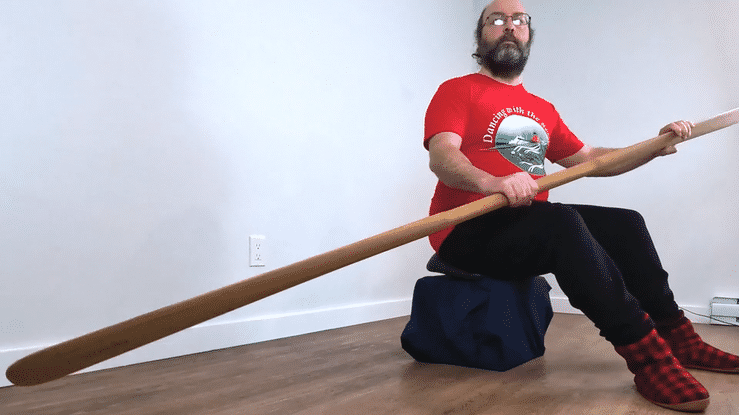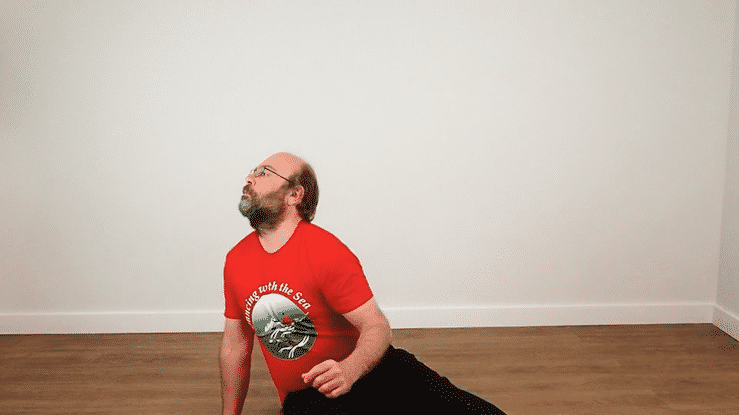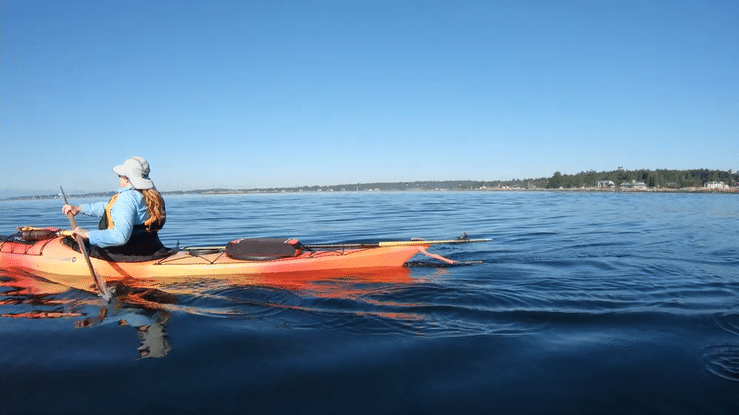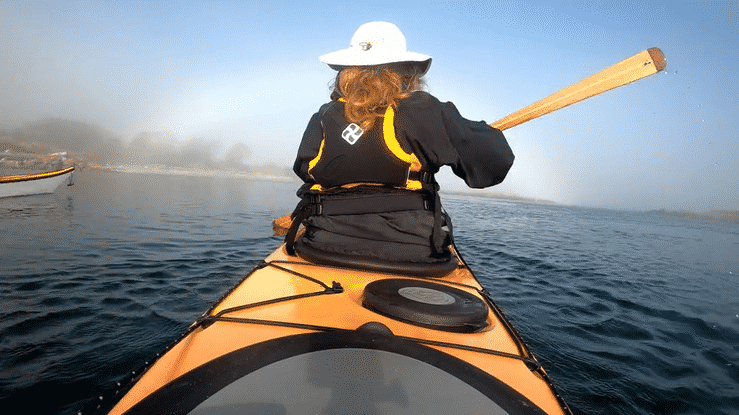
For a forward stroke that feels easy but makes you go faster than the stronger paddlers.
For being stable in waves or currents.
For being able to edge for a turn without ever feeling like you might capsize.
For a layback or forward roll that works every time, even in waves.
Shortly after seeing someone using the Greenland paddle, I became inspired to learn to roll like the Inuit. They made it look so easy.
I thought “If I can move like that I will be safe going anywhere with my kayak.”
A short time later I was doing the balance brace and rolling my kayak with more ease than most paddlers with 15 years of taking lessons.
Even the kayak instructors I knew could not do what I could do with my kayak.
And I was a newbie.
But somehow it was easy for me. Not because I have any kind of talent.
It’s just the method that makes it easy.
What I saw when I watched the Inuit roll is they were rotating and tilting their pelvis. Essentially they were moving in 3 dimensions


It requires a good fit with your kayak to stay in place, and still have the freedom to move your pelvis like that.
After learning to do the forward roll I asked myself “if this is the easiest way to go from upside down to right side up in the low brace position, why not do the low brace the same way?”


As I added more rotation in my forward stroke, this perfect bracing position became more natural.
Adding the same rotation and tilt to my turning made it impossible to edge too far and capsize.
The paddle and your body are in this most effective bracing position.

As I started to share this with paddlers it became evident that a lot of kayakers would benefit from this. Especially the less athletic or older paddlers. It’s easy to learn and apply, and doesn’t require special talent or coordination.
It’s a method that gives the average kayaker similar or even more competence than the younger more athletic paddlers.



Only 6 Spaces Available
As you will soon find out, you already did the hard part.








And eliminated her wrist, elbow and shoulder pain…
Which allows her to go on kayak expeditions in remote locations like Haida Gwaii. Something she never dared dream about before she took the training.
You know the one way to move.
You know how that way of moving applies to everything you do with your kayak.
You can probably already see why this method creates fast results.
Now all you need is consistent practice at applying it in various conditions.
A more efficient forward stroke. (there is always room for improvement) We will focus on efficiency.
As we go across the channel we will systematically remove any weakness that may be creating a weak link.
As you focus on one point, you notice paddling gets a little easier. And you glide a little further with each stroke while using less effort.
Edging and turning. Once we get to the islands, we will hug the shoreline and practice applying the 3 dimensional way of moving your pelvis to edging and turning.
This is such a core skill that I want to make sure you master it. So now when you’re out paddling, maybe even with your loaded kayak, you can have fun maneuvering effortlessly as you follow the rugged shoreline. You can quickly turn to avoid a rock. Or move quickly with precision to get close to someone to do a rescue or set up the tow line.
When the conditions are right we create a safe environment to practice paddling in currents.
You will learn to find the easiest route when going against the current, so you get to your destination without feeling exhausted.
When we have nice waves, we create a safe environment to put your skills to the test and develop your confidence in waves.
If it’s windy we take advantage of it to practice using the wind to help you control your kayak.
So no more fighting with the wind to turn your kayak, and feeling shoulder pain the next day.
Now you know exactly what to do to have the wind help you turn. When you get this it’s like having power steering.
Next time you’re paddling on a windy day you’ll be amazed at how easy it is. And you will wonder why everyone isn’t doing this.
You’ll notice most paddlers are struggling to control their kayak.
They exhaust themselves fighting with the wind because they don’t know what you know.
Want to learn the balance brace?
The layback roll?
The storm roll?
The forward roll?
This is not meant to be like a lesson that gives you bracing skills, or helps you turn better. Or roll your kayak.
This is to transform you into a competent paddler as quickly as possible.
If you have any questions, concerns, not sure if it’s for you…
Please contact me:
Email: [email protected]
Phone: 250-893-0657